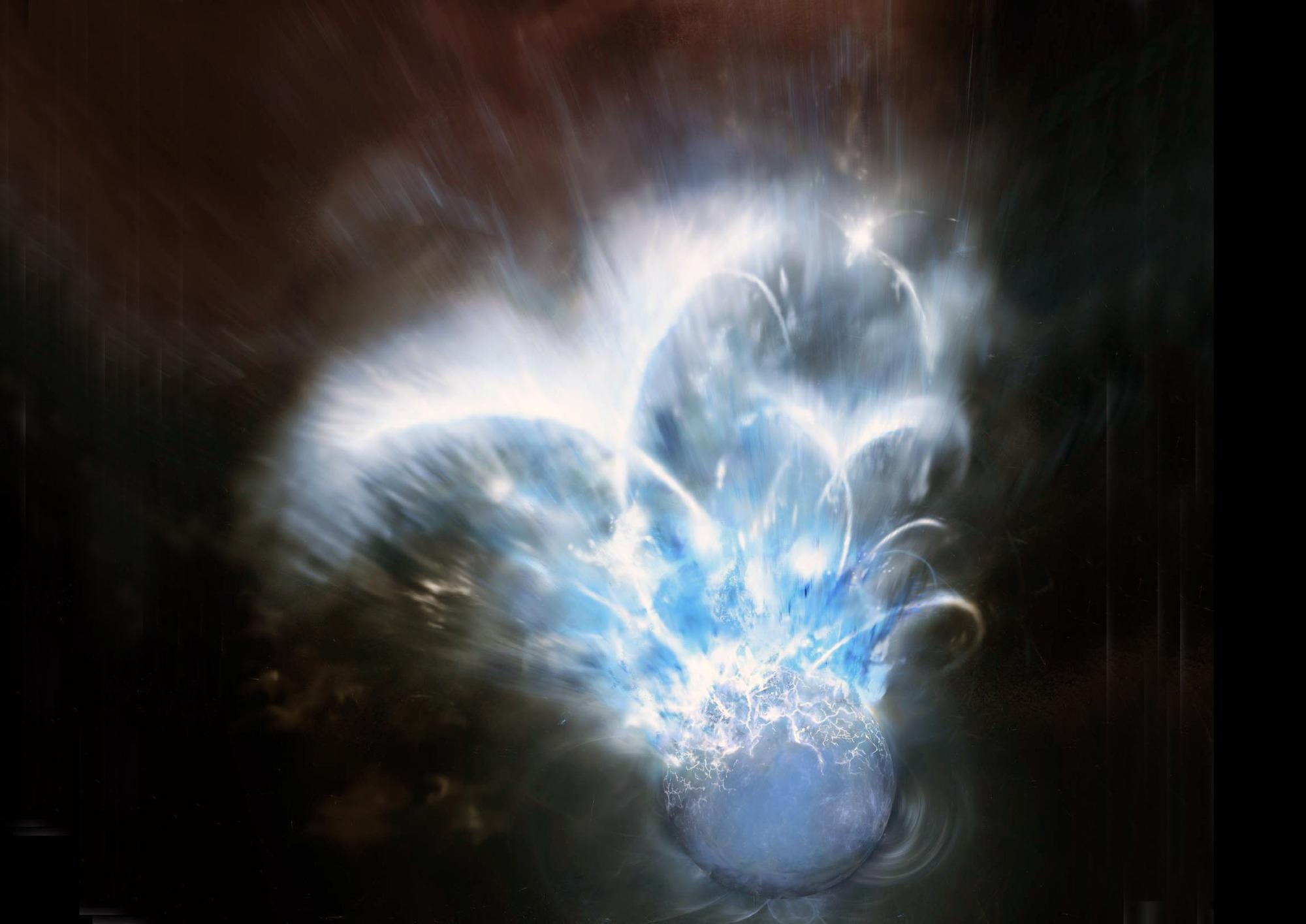For the first time, an international scientific group with outstanding participation from the University of Valencia was able to record variations in the brightness of a neutron star—magnetar—during its most violent periods.

Image Credit: R&I World
The magnetar unleashed energy equivalent to that produced by the Sun in 100,000 years in less than a tenth of a second. The observation was performed automatically, without any need for human interaction, owing to the Artificial Intelligence of a system built at the University of Valencia’s Image Processing Laboratory (IPL).
A small category of neutron stars known as magnetars stands out among the neutron stars, things that can contain half a million times the mass of the Earth in a circumference of around twenty kilometers. Due to their unexpected nature and short duration of tenths of a second, these objects, of which only thirty are known, suffer dramatic eruptions. Little is known about these unique events.
An international research team with outstanding Valencian participation released a detailed study of a magnetar eruption in the journal Nature recently. They were able to measure oscillations—pulses—in the brightness of the magnetar during its most intense moments.
The work has the contribution of six researchers from the University of Valencia and high Spanish participation including 15 scientists out of a total of 41.
Even in an inactive state, magnetars can be one hundred thousand times more luminous than our Sun, but in the case of the flash that we have studied—the GRB2001415—the energy that was released is equivalent to that which our Sun radiates in one hundred thousand years.
Alberto J. Castro-Tirado, Lead Researcher, Instituto de Astrofísica de Andalucía del Consejo Superior de Investigaciones Científicas
Víctor Reglero, professor of Astronomy and Astrophysics at the UV and researcher at the Image Processing Laboratory (IPL) also adds, “The explosion of the magnetar, which lasted approximately a tenth of a second, was discovered on April 15, 2020 in the midst of the pandemic. Since then we have developed very intense data analysis work, since it was a 10 ** 16 Gauss neutron star and located in another galaxy. A true cosmic monster!”
Reglero was also a co-author of the article and one of the architects of ASIM, the instrument aboard the International Space Station that detected the eruption.
Scientists believe that magnetar eruptions are caused by disturbances in their magnetosphere or by “earthquakes” created in their crust, a stiff and elastic layer around a kilometer thick.
Regardless of the trigger, a type of waves is created in the star’s magnetosphere—the Alfvén—which are well known in the Sun and which interact with each other, dissipating energy.
Alberto J. Castro-Tirado, Lead Researcher, Instituto de Astrofísica de Andalucía del Consejo Superior de Investigaciones Científicas
The oscillations found in the eruption are consistent with the emission created by the interplay of Alfvén waves, whose energy is rapidly absorbed by the crust.
Thus, the magnetic reconnection process concludes in a few milliseconds, as do the pulses identified in GRB2001415, which vanished 3.5 ms after the main burst. The volume of the explosion was estimated to be similar to or even more than that of the neutron star itself, based on the examination of the phenomena.
Algorithms Proposed by University of Valencia Capture Oscillation without Human Intervention
The ASIM instrument, which is on board the International Space Station, detected the eruption (ISS). The ASIM telescope, in which the University of Valencia is involved, was the only one of the seven telescopes that was able to record the main phase of the eruption in its whole without experiencing saturations.
The research team was able to solve the event’s temporal structure, a truly difficult task that took more than a year of research for only two seconds of data collection.
The Atmosphere Space Interactions Monitor (ASIM) is an ESA mission developed by Denmark, Norway, and Spain that has been operating on the International Space Station (ISS) since 2018. The ASIM Facility Science Team is led by researchers Torsten Neubert (Technical University of Denmark), Nikolai Ostgaard (University of Bergen, Norway), and Victor Reglero (University of Valencia, Spain).
The goal of ASIM is to monitor violent occurrences in the Earth’s atmosphere from optical to gamma rays at 40 MeV, which it has been doing since June 2018, with 1000 gamma-ray eruptions already identified.
Given that these phenomena are unpredictable, ASIM decides completely autonomously when something has happened and sends the data to the different centers of the Science Data Centre in Copenhagen, Bergen and Valencia.
Víctor Reglero, Professor, Astronomy and Astrophysics, University of Valencia
From the standpoint of signal analysis, detecting quasi-periodic oscillations in GRB2001415 has been quite difficult. “The difficulty lies in the brevity of the signal, whose amplitude rapidly decays and becomes embedded in background noise. And, as it is correlated noise, it is difficult to distinguish its signal,” adds Reglero.
The intelligence of the system developed at the University of Valencia, combined with sophisticated data analysis techniques, and has enabled to detect this spectacular phenomenon.
Despite the fact that these eruptions have already been detected in two of galaxy’s thirty known magnetars and some other nearby galaxies, GRB2001415 would be the most distant magnetar eruption captured to date, being about thirteen million light years away in the Sculptor group of galaxies.
“Seen in perspective, it has been as if the magnetar wanted to indicate its existence to us from its cosmic solitude, singing in the kHz with the force of a Pavarotti of a billion suns,” says Reglero.
This eruption, according to the authors of the paper. has provided a critical aspect in recognizing how magnetic stresses are generated in and around a neutron star.
Constant monitoring of magnetars in nearby galaxies will aid in knowledge of this phenomenon, as well as pave the way for a greater understanding of fast radio bursts, which are currently one of astronomy’s most enigmatic phenomena.
Journal Reference:
Castro-Tirado, A. J., et al. (2021) Very-high-frequency oscillations in the main peak of a magnetar giant flare. Nature. doi.org/10.1038/s41586-021-04101-1.